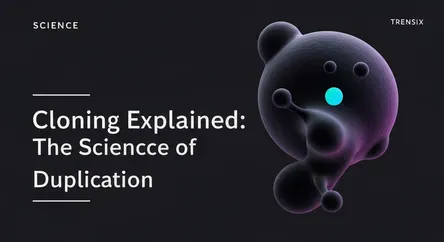Science
Cloning Explained: The Science of Duplication

Explore the science of cloning, from creating genetically identical copies to its ethical debates. Learn how this biotechnology impacts medicine and life.
What is it?
Cloning is the process of creating a genetically identical copy of an organism. While clones like identical twins occur naturally, artificial cloning uses lab techniques like somatic cell nuclear transfer (SCNT). This method involves transferring the DNA from a donor's body cell into an egg cell that has had its DNA removed. The resulting embryo is a genetic duplicate of the donor. This was the technique used to create Dolly the sheep, the first mammal cloned from an adult.
Why is it trending?
Cloning remains a major topic due to rapid scientific progress and its ethical implications. Research into therapeutic cloning, which aims to grow patient-specific tissues to treat diseases, is advancing quickly. Furthermore, the sensational idea of "de-extinction"—cloning extinct species like the woolly mammoth—and efforts to save endangered animals keep it in the headlines. The ongoing, complex debate about human cloning ensures it stays relevant in public discourse.
How does it affect people?
Cloning could profoundly impact humanity. Medically, it offers the potential to create rejection-proof organs and tissues from a patient's own cells, treating conditions from diabetes to severe burns. In agriculture, it allows for the replication of elite livestock. However, it also raises serious ethical questions. The possibility of reproductive human cloning sparks global debate on identity, safety, and morality, forcing us to define the limits of scientific power.